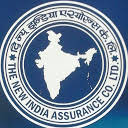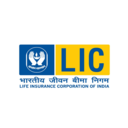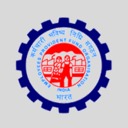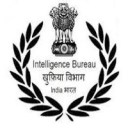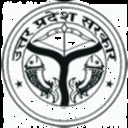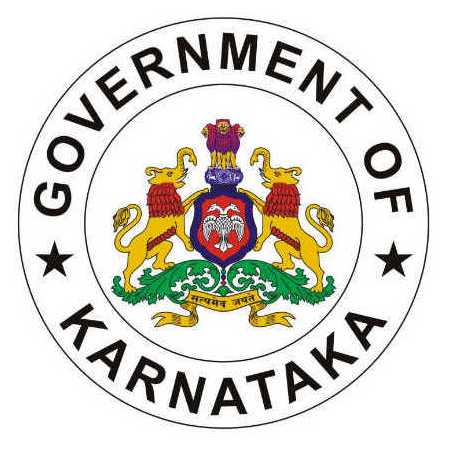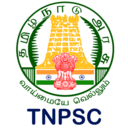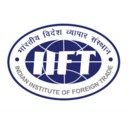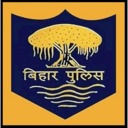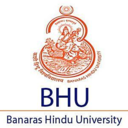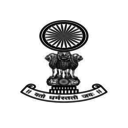The SSC Selection Post Phase 13 Syllabus is among the most crucial parts of exam preparation. Aspirants must have a thorough understanding of the syllabus and exam pattern for an effective strategy. The Staff Selection Commission has released the exam date through the SSC Calendar 2025 for the post of the SSC Selection Post Phase 13, which is expected to be held between 24th July to 04th August 2025. Candidates interested in applying for the examination should know about the SSC Selection Post Phase 13 syllabus 2025. Therefore, this article will provide you with the SSC Selection Post Phase 13 Syllabus and Exam Pattern for the 2025 Exam.
SSC Phase 13 Syllabus Overview
The SSC Selection Post Phase 13 selects candidates based on a single Tier of Examination, which is held in CBT mode and varies according to the post applied for. The details of the SSC Selection Post Phase 13 exam are as follows:
| Exam Particulars | Details |
|---|
| Recruitment Organization | Staff Selection Commission (SSC) |
| Post Name | Various Posts (Level 1 to Level 8) |
| Advt No. | Phase-XIII/ 2025/ Selection Posts |
| Vacancies | 2423 |
| Job Location | All India |
| Category | SSC Selection Post 2025 Phase 13 Notification |
| Notification Release Date | 2nd June, 2025 |
| Selection Process | 1. Computer Based Test
2. Medical Examination And
3. Document Verification |
| Official Website | ssc.gov. in |
SSC Selection Post Phase 13 Exam Pattern
The SCC Selection Post Phase 13 Exam Pattern is divided into three separate Computer Based Examinations which will further consist of Objective Type Multiple Choice questions from the areas related to General Intelligence, General Awareness, Quantitative Aptitude (Basic Arithmetic Skill) and English Knowledge (Basic Knowledge).
- The test Duration will be 60 minutes
- There will be a negative marking of 0.50 marks for each wrong answer.
- Skill Tests like Typing/ Data Entry/ Computer Proficiency Tests, etc., where prescribed in the Essential Qualification will be conducted, which will be qualifying.
Attempt Free SSC Selection Post Mock Test 2025
SSC Selection Post Phase 13 Syllabus For Matriculation level
The syllabus for candidates of matriculation level is as follows.
SSC Selection Post Phase 13 Syllabus For General Intelligence
The test will also include questions designed to test the candidate's abilities to deal with abstract ideas and symbols and their relationship, arithmetical computation, and other analytical functions.
| Topic | Description |
|---|
| Similarities & Differences | Identify similarities & differences between objects, concepts, or situations. |
| Space Visualization | Manipulate & visualize objects in space mentally. |
| Problem-Solving | Analyze complex problems & develop effective solutions. |
| Analysis | Break down information or situations into component parts for understanding & evaluation. |
| Judgment | Make sound decisions or reach sensible conclusions based on given information or criteria. |
| Decision Making | Make effective decisions, often in complex or ambiguous situations. |
| Visual Memory | Remember & recall visual information accurately. |
| Discriminating Observation | Observe & identify subtle differences or patterns within visual stimuli. |
| Relationship Concepts | Understand various relationships between different elements, often represented abstractly. |
| Figure Classification | Classify or categorize visual stimuli based on shared characteristics or properties. |
| Arithmetical Number Series | Identify patterns & relationships in numerical sequences or series. |
| Non-verbal Series | Recognize patterns or relationships in non-verbal sequences or series. |
| Abstract Ideas & Symbols | Comprehend & manipulate abstract concepts or symbols. |
| Arithmetical Computation | Perform arithmetic operations accurately & efficiently. |
| Analytical Functions | Apply logical reasoning & analytical skills to solve problems or tasks effectively. |
SSC Selection Post Phase 13 Syllabus For General Awareness
This section test candidates' overall awareness and knowledge of current events, societal issues, and the cultural, historical, and geographical aspects of India and its neighboring countries.
| Topic | Description |
|---|
| Environmental Awareness | Assess general awareness of environmental issues and their implications for society. |
| Current Events | Test knowledge of recent happenings and developments at local, national, and international levels. |
| Scientific Principles | Assess understanding of scientific concepts and their applications in everyday life. |
| India and Neighboring Countries | Evaluate knowledge of sports, history, culture, geography, economics, and general polity of India and its neighboring countries. |
| Sports | Test knowledge of various sports, athletes, tournaments, and significant sporting events. |
| History | Assess understanding of historical events, personalities, and their significance. |
| Culture | Evaluate knowledge of cultural aspects including traditions, festivals, arts, and literature. |
| Geography | Test understanding of geographical features, locations, and their significance in the context of India and neighboring countries. |
| Economic Scene | Assess awareness of economic developments, policies, and trends affecting India and neighboring countries. |
| General Polity | Evaluate knowledge of the political system, governance, and constitutional framework of India, including the Indian Constitution. |
| Scientific Research | Test understanding of scientific advancements, discoveries, and research initiatives in various fields. |
SSC Selection Post Phase 13 Syllabus For Quantitative Aptitude
This section of the paper focuses on assessing candidates' proficiency in various mathematical concepts and their application.
| Topic | Description |
|---|
| Number Systems | Evaluate understanding of different number systems and their properties. |
| Computation of Whole Numbers, Decimals, and Fractions | Test ability to perform arithmetic operations on whole numbers, decimals, and fractions. |
| Relationship between Numbers | Assess comprehension of relationships between different types of numbers. |
| Fundamental Arithmetical Operations | Evaluate proficiency in basic arithmetic operations such as addition, subtraction, multiplication, and division. |
| Percentages | Test understanding and application of percentage concepts in various contexts. |
| Ratio and Proportion | Assess ability to work with ratios and proportions to solve problems. |
| Averages | Evaluate understanding of average values and their calculation. |
| Interest | Test knowledge and application of simple and compound interest formulas. |
| Profit and Loss | Assess the ability to calculate profit or loss in business transactions. |
| Discount | Evaluate understanding and application of discount calculations. |
| Use of Tables and Graphs | Test ability to interpret data presented in tables and graphs. |
| Mensuration | Assess understanding and application of geometrical measurements and calculations. |
| Time and Distance | Evaluate ability to solve problems related to time, speed, and distance. |
| Ratio and Time | Test comprehension of relationships between ratios and time. |
| Time and Work | Assess ability to calculate work done overtime periods. |
SSC Selection Post Phase 13 Syllabus For English Language
Candidates' understanding of the Basics of the English Language, its vocabulary, grammar, sentence structure, synonyms, antonyms, correct usage, etc. his/her writing ability would be tested.
| Topics | Description |
|---|
| Vocabulary | Evaluate candidates' knowledge of English vocabulary, including the meaning, usage, and context of words. |
| Grammar | Assess understanding of English grammar rules, including tenses, parts of speech, subject-verb agreement, and sentence structure. |
| Sentence Structure | Test comprehension of sentence construction, including the ability to form grammatically correct and coherent sentences. |
| Synonyms | Evaluate knowledge of words that have similar meanings and the ability to identify and use synonyms effectively in context. |
| Antonyms | Assess understanding of words that have opposite meanings (antonyms) and the ability to recognize and use them appropriately. |
| Correct Usage | Test knowledge of the correct usage of words, phrases, and idiomatic expressions in different contexts. |
| Writing Ability | Evaluate candidates' writing skills, including clarity, coherence, organization, and effectiveness in conveying ideas or information. |
SSC Selection Post Phase 13 Syllabus For 10+2 (Higher Secondary) Level
The syllabus for the Higher secondary level is as follows:
SSC Selection Post Phase 13 Syllabus For General Intelligence
This section is to evaluate various aspects of intelligence, including reasoning, problem-solving, emotional awareness, and social understanding, through a diverse range of question types.
| Topics | Description |
|---|
| Semantic Analogy | Understanding relationships based on meaning. |
| Symbolic Operations | Manipulating symbols based on given rules. |
| Symbolic/Number Analogy | Recognizing patterns or relationships between symbols or numbers. |
| Trends | Identifying and interpreting patterns or trends. |
| Figural Analogy | Understanding relationships between visual figures. |
| Space Orientation | Navigating in space mentally. |
| Semantic Classification | Categorizing words based on shared characteristics. |
| Venn Diagrams | Analyzing relationships between groups using diagrams. |
| Symbolic/Number Classification | Classifying symbols or numbers based on attributes. |
| Drawing Inferences | Making logical deductions from given information. |
| Figural Classification | Categorizing visual figures based on similarities. |
| Punched Hole/Pattern-Folding & Unfolding | Visualizing and manipulating patterns or shapes. |
| Semantic Series | Understanding patterns or sequences in words or concepts. |
| Figural Pattern – Folding and Completion | Recognizing and completing visual patterns or shapes. |
| Number Series | Identifying patterns or relationships in numerical sequences. |
| Embedded Figures | Identifying hidden shapes within larger images. |
| Figural Series | Understanding patterns or sequences in visual figures. |
| Critical Thinking | Analyzing and evaluating information objectively. |
| Problem-Solving | Identifying and resolving problems using logic. |
| Emotional Intelligence | Awareness and management of emotions. |
| Word Building | Forming new words through combination or modification. |
| Social Intelligence | Understanding social dynamics and relationships. |
| Coding and Decoding | Encrypting and decrypting messages using codes. |
| Numerical Operations | Performing arithmetic operations and manipulations. |
SSC Selection Post Phase 13 Syllabus For General Awareness
This section is to assess candidates' overall awareness of societal, scientific, and geopolitical aspects, as well as their understanding of historical and cultural contexts related to India and its neighboring countries.
| Topic | Description |
|---|
| Environment and Society | Understanding of environmental issues and their societal impacts. |
| Current Events | Knowledge of recent happenings and developments. |
| Scientific Aspects | Understanding of scientific principles in daily life. |
| India and Neighboring Countries | Knowledge of history, culture, geography, economy, and politics. |
| History | Understanding of significant historical events and periods. |
| Culture | Awareness of cultural traditions, festivals, and arts. |
| Geography | Knowledge of geographical features and locations. |
| Economic Scene | Understanding of economic developments and trends. |
| General Polity | Familiarity with political system and governance structures. |
| Scientific Research | Awareness of scientific advancements and research. |
SSC Selection Post Phase 13 Syllabus For Quantitative Aptitude
This section of the test covers various mathematical topics, including arithmetic, algebra, geometry, mensuration, trigonometry, and statistical charts.
| Topic | Sub-Topics |
|---|
| Arithmetic | Whole Numbers, Decimals, Fractions, Fundamental Operations, Percentages, Ratio & Proportion, Square Roots, Averages, Interest, Profit & Loss, Discount, Partnership Business, Mixture & Allegation, Time & Distance, Time & Work |
| Algebra | Basic Identities, Surds, Linear Equations, Graphs |
| Geometry | Geometric Figures, Triangle, Congruence, Similarity, Circle, Chords, Tangents, Circle Centers |
| Mensuration | Areas & Volumes, Prisms, Cones, Cylinders, Spheres, Hemispheres, Rectangular Parallelepipeds, Pyramids |
| Trigonometry | Trigonometric Ratios, Complementary Angles, Heights & Distances, Standard Identities |
| Statistical Charts | Tables, Histograms, Frequency Polygons, Bar Diagrams, Pie Charts |
SSC Selection Post Phase 13 Syllabus For English Language
Candidates' understanding of the Basics of the English Language, its vocabulary, grammar, sentence structure, synonyms, antonyms, correct usage, etc. his/her writing ability would be tested.
| Topics | Description |
|---|
| Spot the Error | Identify grammatical, spelling, or punctuation errors in sentences or passages. |
| Fill in the Blanks | Complete sentences or passages by filling in missing words or phrases. |
| Synonyms/ Homonyms | Identify words with similar or identical meanings (synonyms) or words that sound alike but have different meanings (homonyms). |
| Antonyms | Identify words with opposite meanings. |
| Spellings/ Detecting Mis-spelt words | Recognize and correct misspelled words in sentences or passages. |
| Idioms & Phrases | Interpret the meaning of idiomatic expressions or phrases. |
| One word substitution | Replace a phrase or group of words with a single word that conveys the same meaning. |
| Improvement of Sentences | Rewrite sentences to improve clarity, coherence, or grammatical correctness. |
| Active/ Passive Voice of Verbs | Convert sentences from active voice to passive voice or vice versa. |
| Conversion into Direct/ Indirect narration | Rewrite sentences from direct speech to indirect speech or vice versa. |
| Shuffling of Sentence parts | Rearrange the parts of sentences to form coherent and grammatically correct sentences. |
| Shuffling of Sentences in a passage | Rearrange the order of sentences within a paragraph or passage to enhance coherence or logical flow. |
| Cloze Passage | Complete a passage by filling in the missing words or phrases, based on context and understanding of the passage. |
| Comprehension Passage | Read and understand a passage, and answer questions based on the information provided in the passage. |
Explore all Selection Post Courses
SSC Selection Post Phase 13 Syllabus For Graduation Level Posts and Above
The syllabus mentioned below is for the graduation and above-level posts.
SSC Selection Post Phase 13 Syllabus For General Intelligence
The detailed Syllabus for Reasoning is as follows:
| Topics | Description |
|---|
| Analogies | Assessing the ability to recognize relationships between concepts or ideas and apply them to new situations. |
| Similarities and Differences | Identifying similarities and differences between objects, concepts, or situations. |
| Space Visualization | Ability to mentally manipulate and visualize objects in space. |
| Spatial Orientation | Understanding one's position in relation to the surrounding environment. |
| Problem Solving | Capacity to analyze complex problems and develop effective solutions. |
| Analysis | Breaking down information or situations into component parts for better understanding and evaluation. |
| Judgment | Making sound decisions or reaching sensible conclusions based on given information or criteria. |
| Decision Making | Ability to make effective decisions, often in complex or ambiguous situations. |
| Visual Memory | Remembering and recalling visual information accurately. |
| Discrimination | Observing and identifying subtle differences or patterns within visual stimuli. |
| Observation | Ability to observe and comprehend details or events accurately. |
| Relationship Concepts | Understanding various relationships between different elements, often represented abstractly. |
| Arithmetical Reasoning | Applying logical reasoning to solve arithmetic problems. |
| Figural Classification | Categorizing visual figures or shapes based on shared characteristics. |
| Arithmetic Number Series | Identifying patterns or relationships in numerical sequences. |
| Non-verbal Series | Recognizing patterns or relationships in non-verbal sequences. |
| Coding and Decoding | Encrypting and decrypting messages using specified coding systems. |
| Statement Conclusion | Drawing conclusions based on given statements or premises. |
| Syllogistic Reasoning | Assessing logical reasoning based on two or more propositions. |
| Semantic Analogy | Identifying relationships between words or concepts based on meaning. |
| Symbolic/Number Analogy | Recognizing patterns or relationships between symbols or numbers. |
| Figural Analogy | Understanding relationships between visual figures or shapes. |
| Semantic Classification | Categorizing words or concepts based on shared characteristics or meanings. |
| Symbolic/Number Classification | Classifying symbols or numbers into groups based on common attributes. |
| Semantic Series | Recognizing patterns or sequences in words or concepts. |
| Number Series | Identifying patterns or relationships in numerical sequences. |
| Figural Series | Understanding patterns or sequences in visual figures or shapes. |
| Word Building | Forming new words through combination or modification of existing ones. |
| Numerical Operations | Performing arithmetic operations and manipulating numerical data. |
| Trends | Identifying and interpreting patterns or trends in data or information. |
| Space Orientation | Understanding spatial relationships and directions. |
| Space Visualization | Mentally manipulating and visualizing objects in space. |
| Venn Diagrams | Analyzing relationships between groups using Venn diagrams. |
| Drawing Inferences | Making logical deductions from given information. |
| Punched Hole/Pattern Folding & Unfolding | Visualizing and manipulating patterns or shapes. |
| Figural Pattern Folding and Completion | Recognizing and completing visual patterns or shapes. |
| Indexing | Organizing and categorizing information systematically. |
| Address Matching | Matching addresses or locations with corresponding information. |
| Date & City Matching | Matching dates or cities with corresponding information. |
| Classification of Center Codes/Roll Numbers | Categorizing center codes or roll numbers based on given criteria. |
| Small & Capital Letters/Numbers Coding, Decoding and Classification | Coding, decoding, and classifying letters or numbers based on specific rules or patterns. |
| Embedded Figures | Identifying hidden shapes within larger images. |
| Critical Thinking | Analyzing and evaluating information objectively. |
| Emotional Intelligence | Awareness and management of one's own emotions and empathy with others. |
| Social Intelligence | Understanding social dynamics, interactions, and interpersonal relationships. |
| Other subtopics, if any | Additional topics or subcategories not covered in the above list. |
SSC Selection Post Phase 13 Syllabus For General Awareness
The detailed Syllabus for General Awareness is as follows:
| Topics | Description |
|---|
| Environment and Society | Questions designed to evaluate candidates' understanding of environmental issues and their societal impacts. |
| Current Events | Assessing knowledge of recent happenings and developments both nationally and internationally. |
| Scientific Aspects | Testing comprehension of scientific principles in everyday life and their application to various situations. |
| Every Day Observations | Questions aimed at assessing familiarity with common observations and experiences and their scientific aspects. |
| India and Neighboring Countries | Questions pertaining to the history, culture, geography, economic scene, general polity, and scientific research of India and its neighboring countries. |
| History | Evaluating knowledge of significant historical events, periods, and developments. |
| Culture | Assessing familiarity with cultural traditions, festivals, art forms, and practices. |
| Geography | Testing understanding of geographical features, landmarks, and spatial relationships. |
| Economic Scene | Evaluating awareness of economic developments, trends, and issues affecting the region. |
| General Polity | Assessing understanding of the political system, governance structures, and administrative processes. |
| Scientific Research | Testing knowledge of advancements, breakthroughs, and ongoing research in various scientific fields. |
SSC Selection Post Phase 13 Syllabus For Quantitative Aptitude
The detailed Syllabus for Quantitate Aptitude is as follows:
| Topics | Description |
|---|
| Number Sense and Computation | Assessing the candidate's ability to use numbers appropriately and demonstrate number sense. Scope includes computation of whole numbers, decimals, fractions, and understanding relationships between numbers. |
| Percentage | Understanding and applying concepts related to percentages. |
| Ratio & Proportion | Understanding and applying concepts related to ratios and proportions. |
| Square Roots | Calculating square roots of numbers. |
| Averages | Calculating and interpreting averages of data sets. |
| Interest | Understanding and applying concepts related to simple and compound interest. |
| Profit and Loss | Calculating and interpreting profit and loss in business transactions. |
| Discount | Calculating and interpreting discounts on products or services. |
| Partnership Business | Understanding and applying concepts related to partnership business agreements. |
| Mixture and Allegation | Understanding and applying concepts related to mixtures and allegations in solving problems. |
| Time and Distance | Solving problems related to time, speed, and distance. |
| Time & Work | Solving problems related to time and work efficiency. |
| Basic Algebraic Identities | Understanding and applying basic algebraic identities. |
| Elementary Surds | Understanding and applying concepts related to elementary surds. |
| Graphs of Linear Equations | Plotting and interpreting graphs of linear equations. |
| Geometry | Understanding and applying concepts related to geometry, including triangles, quadrilaterals, regular polygons, circles, prisms, cones, cylinders, spheres, hemispheres, and rectangular parallelepipeds. |
| Trigonometric Ratio | Understanding and applying trigonometric ratios in solving problems related to triangles. |
| Degree and Radian Measures | Understanding and converting between degree and radian measures. |
| Standard Identities | Applying standard trigonometric identities in problem-solving. |
| Complementary Angles | Understanding and applying concepts related to complementary angles. |
| Heights and Distances | Solving problems related to heights and distances using trigonometry. |
| Statistical Charts | Understanding and interpreting statistical charts, including histograms, frequency polygons, bar diagrams, and pie charts. |
SSC Selection Post Phase 13 Syllabus For English Language
The detailed Syllabus for English is as follows:
| Topics | Description |
|---|
| Spot the Error | Identify grammatical, spelling, or punctuation errors in sentences or passages. |
| Fill in the Blanks | Complete sentences or passages by filling in missing words or phrases. |
| Synonyms/ Homonyms | Identify words with similar or identical meanings (synonyms) or words that sound alike but have different meanings (homonyms). |
| Antonyms | Identify words with opposite meanings. |
| Spellings/ Detecting Mis-spelt words | Recognize and correct misspelled words in sentences or passages. |
| Idioms & Phrases | Interpret the meaning of idiomatic expressions or phrases. |
| One word substitution | Replace a phrase or group of words with a single word that conveys the same meaning. |
| Improvement of Sentences | Rewrite sentences to improve clarity, coherence, or grammatical correctness. |
| Active/ Passive Voice of Verbs | Convert sentences from active voice to passive voice or vice versa. |
| Conversion into Direct/ Indirect narration | Rewrite sentences from direct speech to indirect speech or vice versa. |
| Shuffling of Sentence parts | Rearrange the parts of sentences to form coherent and grammatically correct sentences. |
| Shuffling of Sentences in a passage | Rearrange the order of sentences within a paragraph or passage to enhance coherence or logical flow. |
| Cloze Passage | Complete a passage by filling in the missing words or phrases, based on context and understanding of the passage. |
| Comprehension Passage | Read and understand a passage, and answer questions based on the information provided in the passage. |
SSC Selection Post Syllabus PDF
The SSC Selection Post Syllabus is a crucial document that outlines the topics and subjects that candidates need to study for the Staff Selection Commission Selection Post examination. It is typically provided in a PDF format, making it easily accessible to aspirants.
It serves as a roadmap for candidates, helping them prepare effectively and focus on the most important areas for the exam, ultimately increasing their chances of success.
Download SSC Selection Post Syllabus PDF





